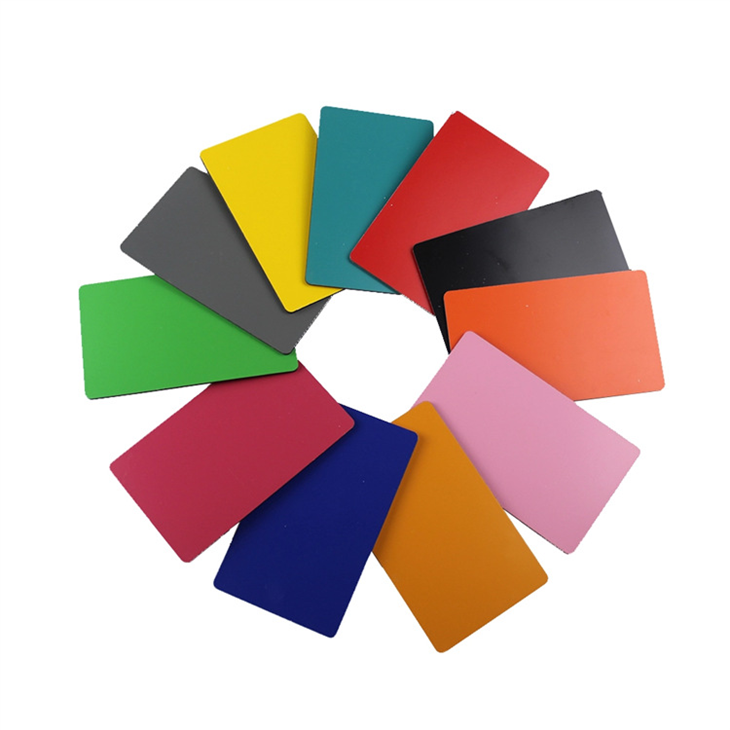Hey there! As a supplier of aluminum cladding panels, I'm super excited to take you through the manufacturing process of these awesome panels. Aluminum cladding panels are widely used in construction for their durability, aesthetic appeal, and versatility. So, let's dive right in!
Raw Material Preparation
The first step in making aluminum cladding panels is getting the raw materials ready. We start with high - quality aluminum coils. These coils are made from pure aluminum or aluminum alloys, depending on the specific requirements of the panel. The alloys are carefully formulated to enhance the panel's strength, corrosion resistance, and other properties.
The aluminum coils are sourced from reliable suppliers. We make sure they meet our strict quality standards. Once we have the coils, they are inspected for any defects like scratches, dents, or uneven thickness. If any issues are found, the coils are either returned or re - worked.
Coating Process
After the raw material inspection, it's time for the coating process. This is a crucial step as the coating not only gives the panels their color and finish but also protects them from environmental factors like UV rays, moisture, and pollution.
There are different types of coatings available. One popular option is the PE (Polyethylene) surface coating. You can check out our PE Surface Coating ACP Aluminium Composite Panel for more details. The coating is applied using advanced spraying or roller coating techniques.
Before applying the coating, the aluminum surface is thoroughly cleaned and pre - treated. This helps the coating to adhere better. The cleaning process usually involves degreasing and pickling to remove any dirt, oil, or oxidation on the surface.
Once the surface is pre - treated, the coating is applied in multiple layers. Each layer serves a specific purpose. The primer layer provides a good base for the topcoat and improves adhesion. The topcoat gives the panel its color and gloss, and also provides the main protection.
Core Material Insertion
For aluminum composite panels, a core material is inserted between two aluminum sheets. The most common core material is polyethylene (PE), which is lightweight, cost - effective, and provides good insulation properties.
The core material is cut to the right size and then placed between the two coated aluminum sheets. The three layers are then bonded together using a special adhesive. The bonding process is done under high pressure and temperature to ensure a strong and durable bond.
This combination of aluminum sheets and core material makes the panels lightweight yet strong enough to withstand various loads. It also gives the panels good thermal and acoustic insulation properties.
Cutting and Shaping
After the panels are bonded, they are cut and shaped according to the customer's requirements. We use advanced cutting machines that can make precise cuts. Whether it's a simple rectangular shape or a more complex custom design, our machines can handle it.
The cutting process is automated to ensure accuracy and consistency. Once the panels are cut, they are also trimmed and finished to remove any rough edges. This gives the panels a clean and professional look.
Quality Control
Quality control is an important part of the manufacturing process. We have a strict quality control system in place to ensure that every panel meets our high standards.
Each panel is inspected for its dimensions, coating quality, bonding strength, and overall appearance. We use various testing methods, such as visual inspection, thickness measurement, adhesion testing, and weathering tests.
If a panel fails any of the quality tests, it is either re - worked or discarded. This ensures that only the best - quality panels are sent to our customers.
Packaging and Shipping
Once the panels pass the quality control tests, they are ready for packaging. We use high - quality packaging materials to protect the panels during transportation. The panels are usually wrapped in plastic film and then placed in wooden crates or cartons.
The packaging is designed to prevent any damage from impacts, scratches, or moisture. We also label the packages clearly with information like panel size, color, quantity, and handling instructions.
After packaging, the panels are shipped to our customers all over the world. We work with reliable shipping partners to ensure timely and safe delivery.
Why Choose Our Aluminum Cladding Panels
We take pride in our manufacturing process and the quality of our aluminum cladding panels. Our panels are not only high - quality but also cost - effective. We offer a wide range of colors and finishes to meet different design needs.


Whether you're working on a commercial building, a residential project, or an industrial facility, our Aluminum Composite Panel For Building External Cladding is a great choice.
We also provide factory wholesale prices. You can explore our Factory Wholesale Aluminum Composite Panel options if you're looking for bulk purchases.
If you're interested in our aluminum cladding panels, we'd love to hear from you. Whether you have questions about the product, need a quote, or want to discuss a specific project, don't hesitate to reach out. We're here to help you make the best choice for your construction needs.
References
- Aluminum Association. (2023). Aluminum in Construction.
- Construction Materials Handbook. (2022). McGraw - Hill.